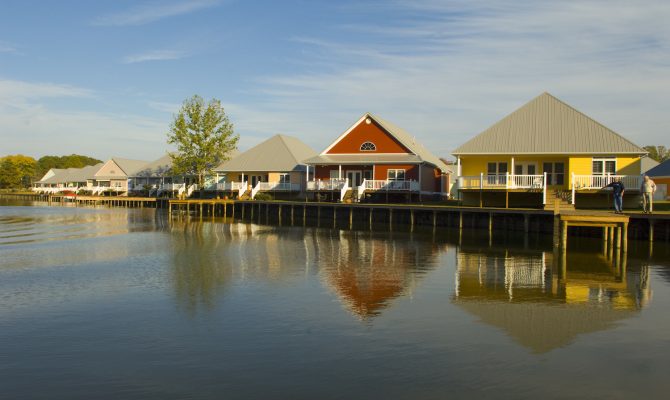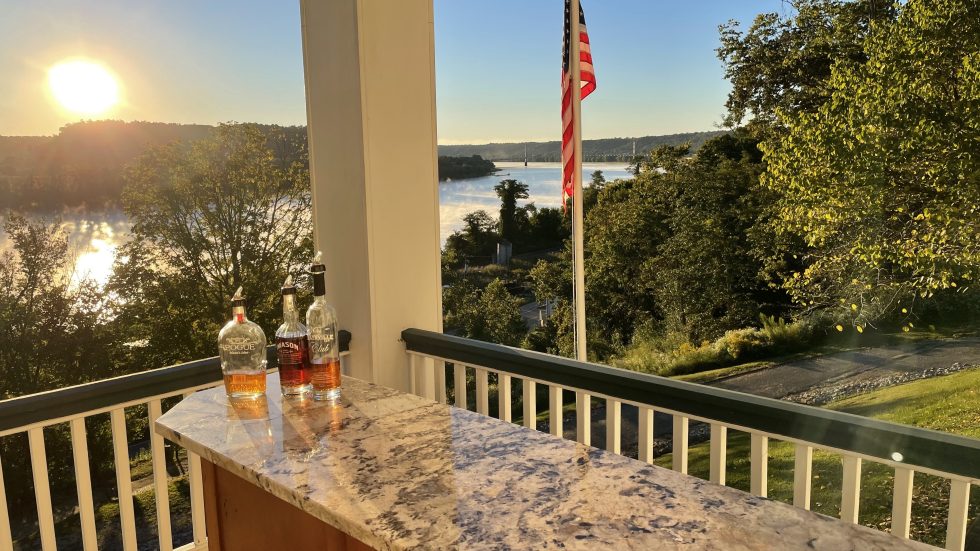“The trail has everything, from the mountain tops, canyons and cascades in northern Alabama, jungle and lakes in the middle, and in the south the second largest river delta in the United States that leads into the waters of Mobile Bay, where it terminates at historic Ft. Morgan,” said Jim Felder, executive director of the ASRT, noting that of all the water flowing into the ocean, a 12th of it flows through Alabama.
Indeed, the trail offers passage for both powerboaters and paddlers, who, depending upon their preference and the size of their vessel, can pick a leg or travel the entire way along numerous rivers such as the Tallapoosa, Dog, Mobile, Tenn-Tom and, of course, the Alabama. It’s a journey dotted with floating camping platforms for kayakers as well as swimming platforms (just drop anchor and enjoy a leisurely float), sand bars for mooring, parks for picnicking and camping — plus both small and large marinas.
Life on the River
Glenn Dean, a self-described river rat, began canoeing and fishing the Alabama River with his brother back in the 1970s, when they were both young.
“We raised our children on the river,” said Dean, who along with his Joanne lives on Gypsy, their 26-foot McGregor MacTrawler, for about half of the year, often traveling along the trail to Mobile Bay and then heading east to Apalachicola, Florida.
One year they spent eight months aboard, making the 3,500-mile round trip from Montgomery to Key West. “Another year we were hired as pilots onboard the Harriet II, Montgomery’s paddlewheeler,” he said.
Dean is also a River Angel, a group volunteers who provide a plethora of pre-arranged services to trail travelers, whether it’s taking them to buy supplies, assisting in planning their trip and giving directions, locating outfitters and gear, or making suggestions based upon their own experiences and knowledge.
Stops Along the Trail
Options along the trail vary. Cities like Montgomery, Gadsden and Mobile optimize their river heritage with marinas, parks and easy access to restaurants, museums and shops. But in between such river-centric municipalities, Dean says that marinas are often few and far between, and it’s always wise for powerboaters to carry extra fuel and other necessaries.
“But that’s part of the beauty of the river trail — its wilderness,” he said about traveling past vast tracks of unpopulated woodlands, white sandstone cliffs, dams and beckoning tributaries leading off into territories waiting to be explore. “On a slow boat like ours, you can go days without seeing anyone. It’s like going back in time.”
When in need of civilization, the couple moors at one of the lovely parks created by the Army Corp of Engineers or at such favorites as Millers Ferry Marina hard by Millers Ferry Lock and Dam near Camden.
“Millers has been around for more than 40 years,” said Jessica Smith, part owner of the marina, which besides gas, snacks and beverages also has a restaurant where specials like their hamburger steak served with mashed potatoes, creamed corn, roll and tea will set you back $8.95.
“Prairie Creek right above the Henry Dam has very nice docks,” continued Dean about the waterway leading into Woodruff Lake, known for its excellent bass, crappie, catfish and bluegill fishing located in the rolling hills region of the trail known as the Black Prairie Belt. “Towards the end, ten miles south of the Port of Mobile, in the Bay, is Dog River. It has at least three marinas that sell gas but the Dog River Marina is our favorite as they cater to the snowbirds as well as boaters doing the loop.”
The lower half of the trail is particularly attractive for all types of powerboats because the three locks on the lower half of the trail mean that most can make the trip from Montgomery to Mobile in two days — and even a slow powerboat can make it in four days, said Dean, adding that campgrounds are available all along the route.
Into Mobile Bay
At the southern end of the ASRT, powerboaters can dock at 5 Rivers Delta Resource Center in Spanish Fort near Mobile, where the Mobile, Spanish, Tensaw, Apalachee and Blakeley rivers flow into Mobile Bay. Here, they can visit the 4,000-square-foot Apalachee Exhibit Hall and its historic photographs, informative exhibits and, for kids, the 12-foot alligator caught nearby.
For live gator sightings and a chance to experience the beauty of the lower Mobile-Tensaw Delta — a 10-mile swath of marsh, cypress-tupelo swamp and bottomland hardwood with more than 50 rare and endangered plant and animal species — there’s the Osprey, a pontoon boat operated by 5 Rivers Safari, at Bartram’s Landing, about a quarter mile away.
The tour explores a section of the Bartram Canoe Trail, named for William Bartram, who, on assignment for King George III, explored Alabama, Florida and Georgia, writing about it in his book, The Travels of William Bartram.
“We go out to Justin Bay and then on to the Blakeley River,” said guide Johanna Gertsch about the 90-minute tour. “You can see plenty of birds and mammals, like pelicans and nutrias, but it’s the many alligator sightings that are the main attraction.”
The river trail officially ends at Fort Morgan, scene of the Battle of Mobile Bay and a stop on the Battle for Mobile Bay Civil War Trail. It was during the Civil War that Admiral David Farragut, after seeing the “unsinkable” ironclad ship USS Tecumseh glide into the bay, uttered the famous statement, “Damn the torpedoes. Four bells, Captain Drayton, go ahead. Jouett, full speed.”
It’s this combination of natural beauty and history, said Felder, which makes the waterways so special.
“If you look at Alabama’s great seal, you’re looking at Alabama Scenic River Trail, even though it was drafted 200 years ago,” he said. “It was an advertisement. That’s how people traveled back then, and it was telling them we can move your product.”
For more information on the Alabama Scenic River Trail see www.alabamascenicrivertrail.com.
Author: Jane Ammeson is a contributor to HeartLand Boating magazine




